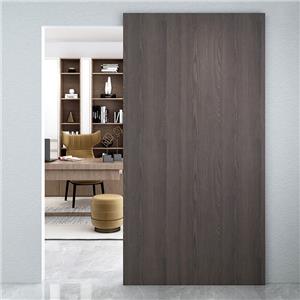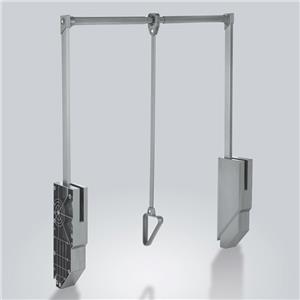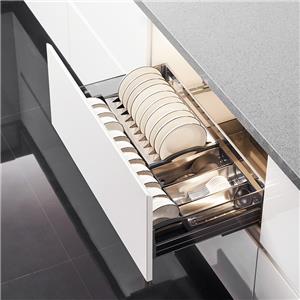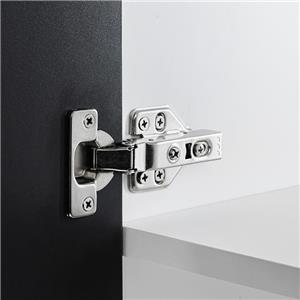Applications of Special Angle Hinges
When working with L-shaped cabinets, angled cabinets, pentagon cabinets, and other irregular-shaped cabinets, standard hinges may not be suitable. We need to use special angle hinges based on the specific conditions of the cabinet.
Regarding special angle hinges:
Is the opening and closing angle of a 30° or 45° hinge exactly 30° or 45°?
Where are various special angle hinges suitable for use?
How can they be combined for different door opening configurations?
01 How to distinguish hinge angles
To distinguish hinge angles, we need to understand that hinge angles can be categorized into closing angles and opening angles.
The closing angle refers to the angle at which the door panel is tilted inward or outward in relation to the side panel when the door is closed, with 90° as the reference point. A negative angle indicates that the door panel is tilted towards the side panel, while a positive angle indicates that the door panel is tilted outward. When we mention angles like -30°, +30°, -45°, +45°, and 90°, we are referring to the closing angles of the hinge.
For example, if the door panel is tilted outward at an angle of 45°, resulting in a 135° angle between the door panel and the side panel when closed, a +45° hinge would be required.
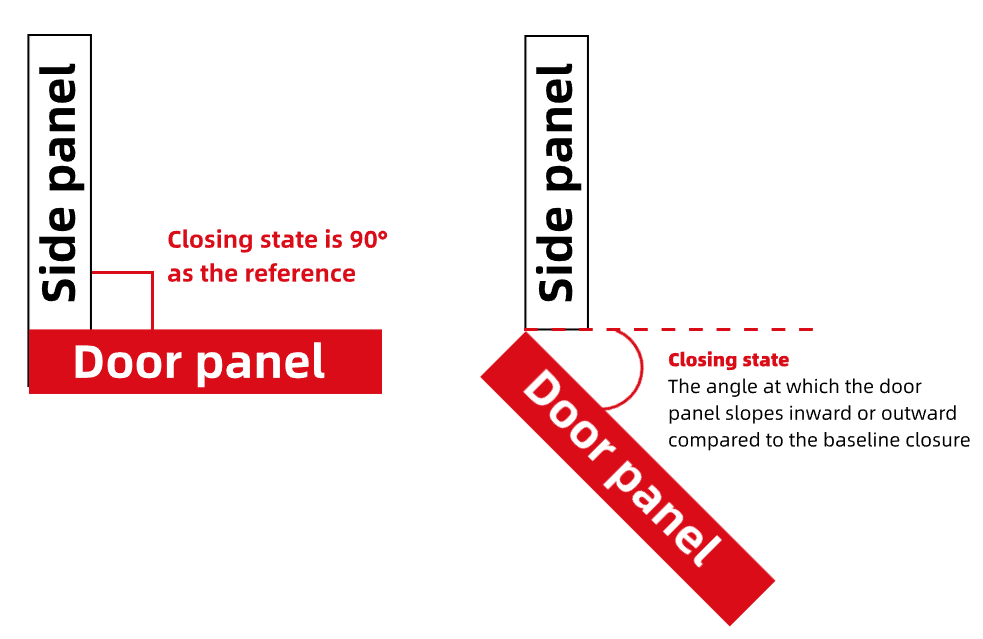
The opening angle, on the other hand, refers to the angle formed by the door panel when it is fully open compared to its position when closed. The commonly used angles like 100°, 105°, 155°, 165° typically represent the opening angles of the hinge.
For example, if the door panel forms a 105° angle with the closed position when fully open, a 105° hinge would be used.
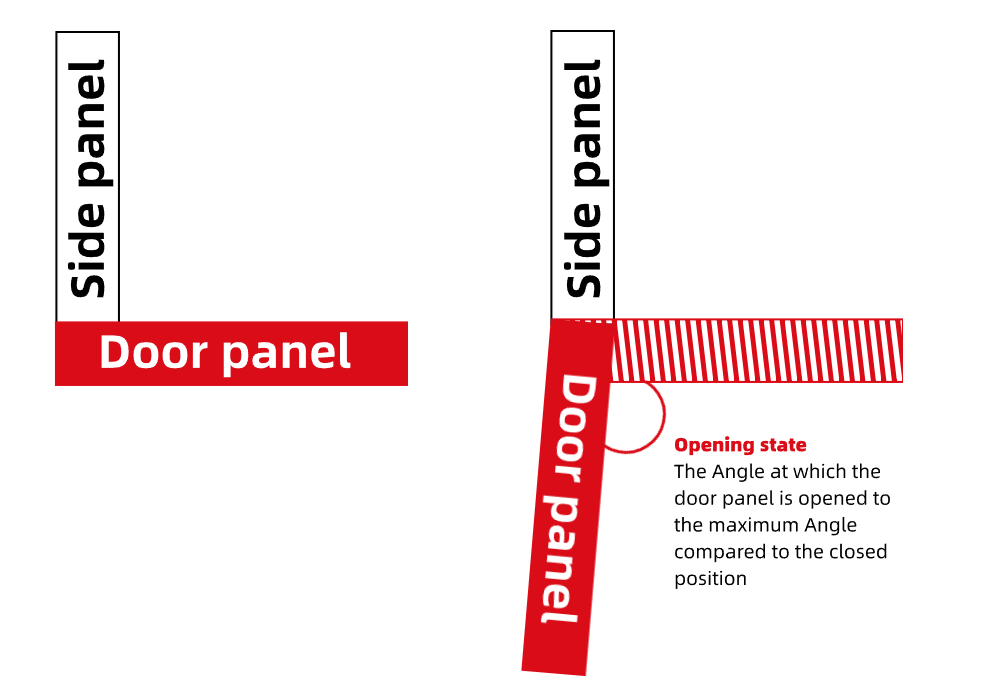
02 Range of Application for Special Angle Hinges
-45° Hinge: Suitable for angles between 45° and 60°, commonly used in corner cabinets or trapezoidal cabinets.
-30° Hinge: Suitable for angles between 60° and 80°, commonly used in corner cabinets or trapezoidal cabinets.
+30° Hinge: Suitable for angles between 120° and 135°, commonly used in pentagonal cabinets.
+45° Hinge: Suitable for angles greater than or equal to 135°, commonly used in pentagonal cabinets.
+90° Hinge: Typically used in cabinets without a vertical center panel, where the door aligns flush with the fixed side panel (forming a 180° angle).
+135° Hinge: Specifically designed for connecting doors together, where the angle formed when closed is +135°.
155° Hinge: Generally refers to hinges with a maximum opening angle of 155°, suitable for various applications such as double doors, corner cabinets with linked doors, and cabinets with complex angles.
03 Application of Special Angle Hinges - Solutions for Irregular Cabinets
After understanding the range of application, it is easier to comprehend the use of special angle hinges in irregular cabinets. Let's take a look at several common designs of irregular cabinets and how to pair them with special angle hinges!
Diamond Pentagonal Cabinet:

When the angle between the door panel and the side panel is between 120° and 135°, use a +30° hinge.
When the angle between the door panel and the side panel is greater than or equal to 135°, use a +45° hinge.
We recommend using the TUTTI H49B hinge (+45° buffer hinge) with an opening angle of 105°, suitable for door panels with a thickness of 14-22mm.
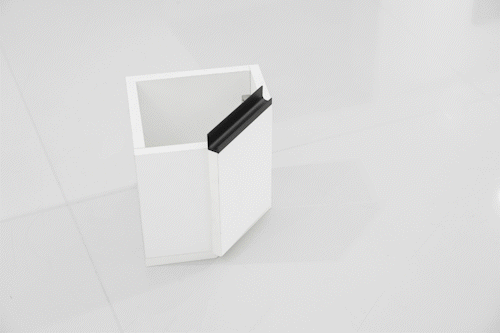
Corner Cabinet with Flat Opening Doors (without vertical panel):
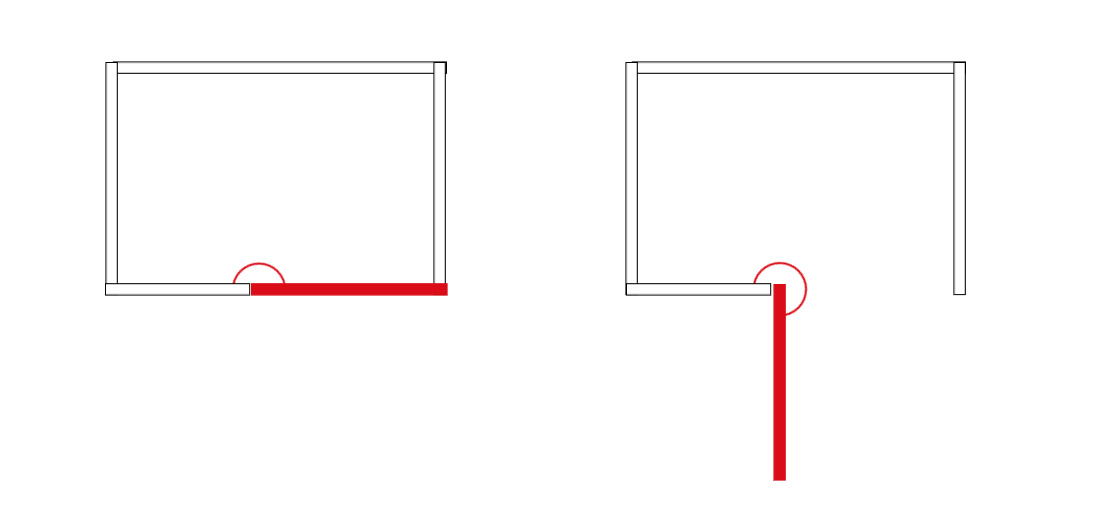
The door panel should be at the same level as the fixed side panel, requiring a +90° hinge, also known as a parallel hinge.
We recommend using the Tutti H49C hinge (+90° buffer hinge) with a 105° opening angle, suitable for door panels with a thickness of 14-22mm.
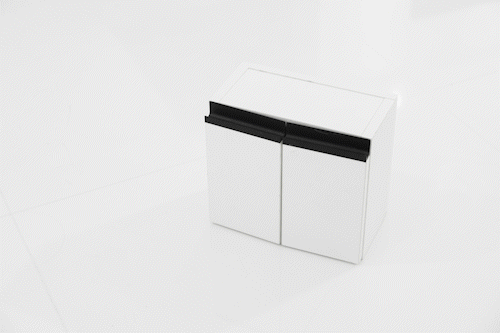
L-shaped Corner Cabinet with Double Opening Doors:
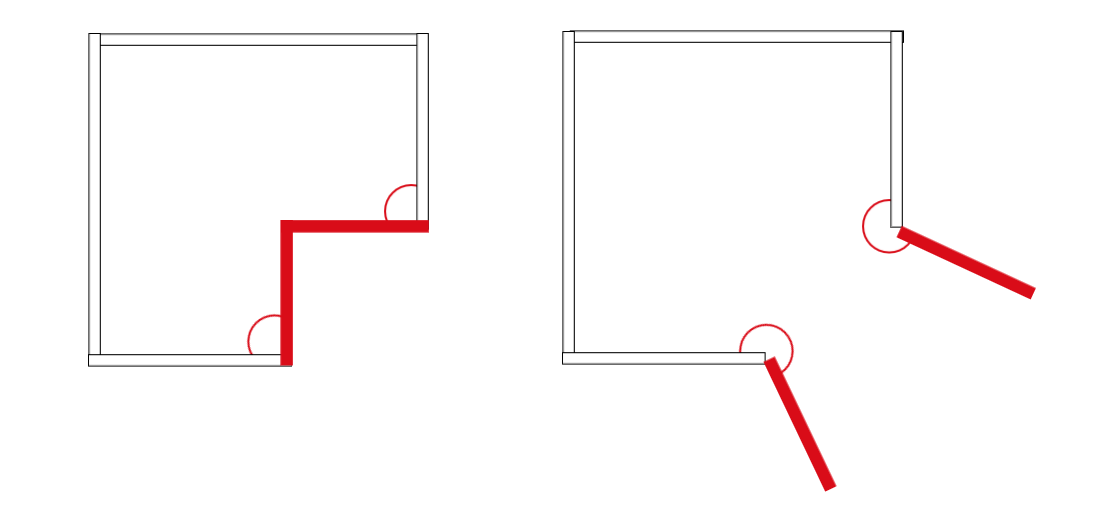
Use a 155° hinge to ensure a larger door opening angle for convenient access to items.
We recommend using the Tutti H96 hinge (155° two-way soft closing hinge) for a wide-angle opening and suitable for door panels with a thickness of 16-24mm.
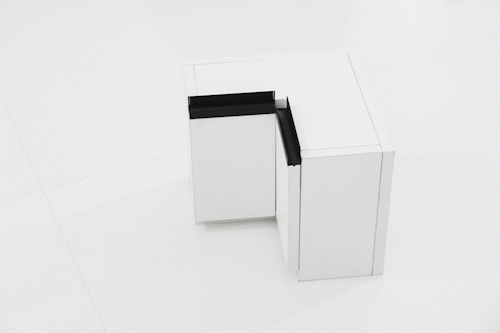
L-shaped Linked Doors Corner Cabinet:
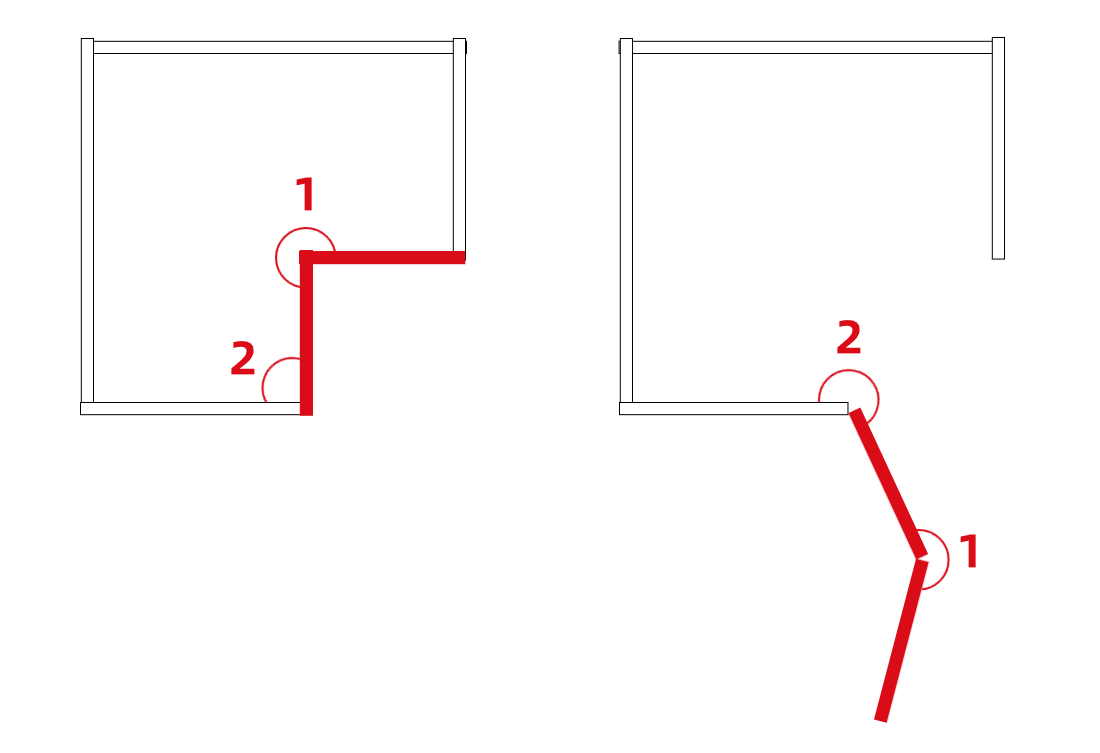
∠1: Use a +135° hinge between door panels.
∠2: Use a 155° hinge between the door panel and the side panel.
We recommend using the Tutti H15 hinge (+135° two-way hinge, suitable for door panels with a thickness of 14-22mm) and the Tutti H96 hinge (155° two-way buffer hinge, wide-angle vision, suitable for door panels with a thickness of 16-24mm).

Other Cabinets such as Triangular and Trapezoidal Cabinets:
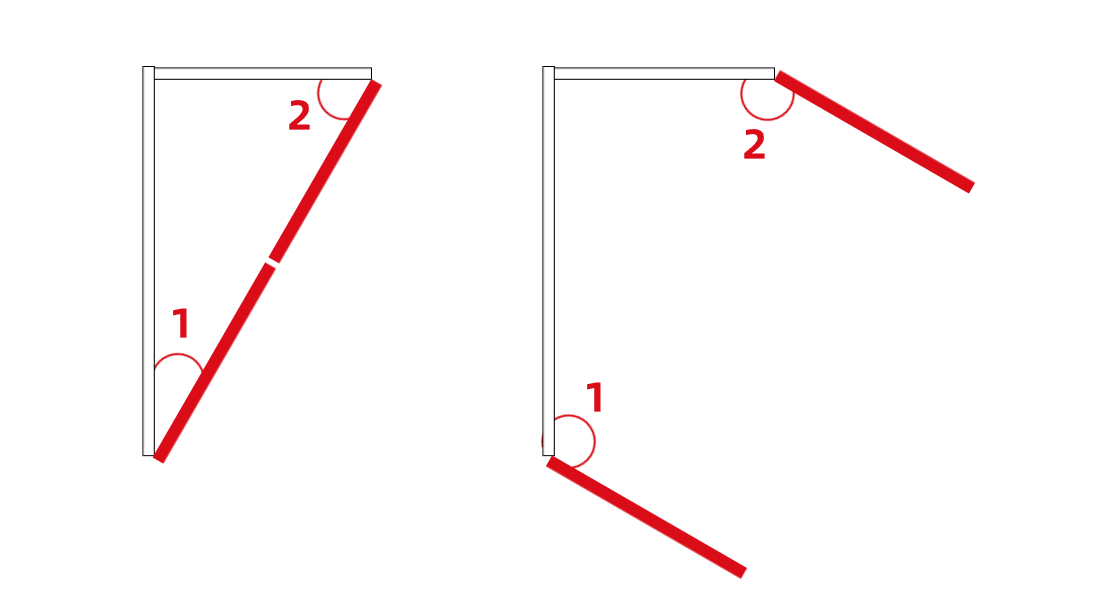
Triangular Cabinet:
When the angle between the door panel and the side panel is between 45° and 60°, use a -45° hinge.
When the angle between the door panel and the side panel is between 60° and 80°, use a -30° hinge.
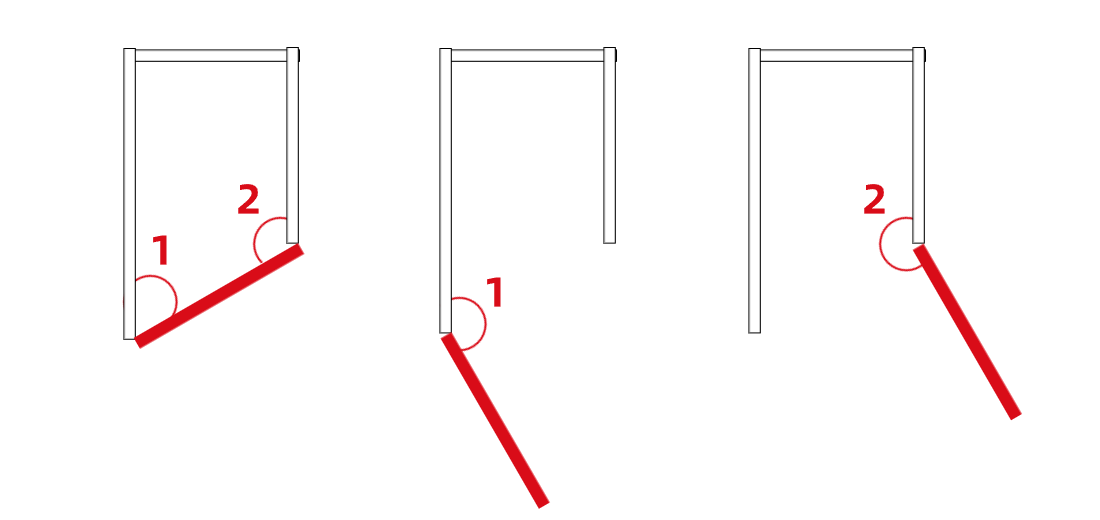
Trapezoidal Cabinet:
∠1 Opening: When the angle between the door panel and the side panel is between 45° and 60°, use a -45° hinge.
∠2 Opening: When the angle between the door panel and the side panel is greater than or equal to 135°, use a +45° hinge.

